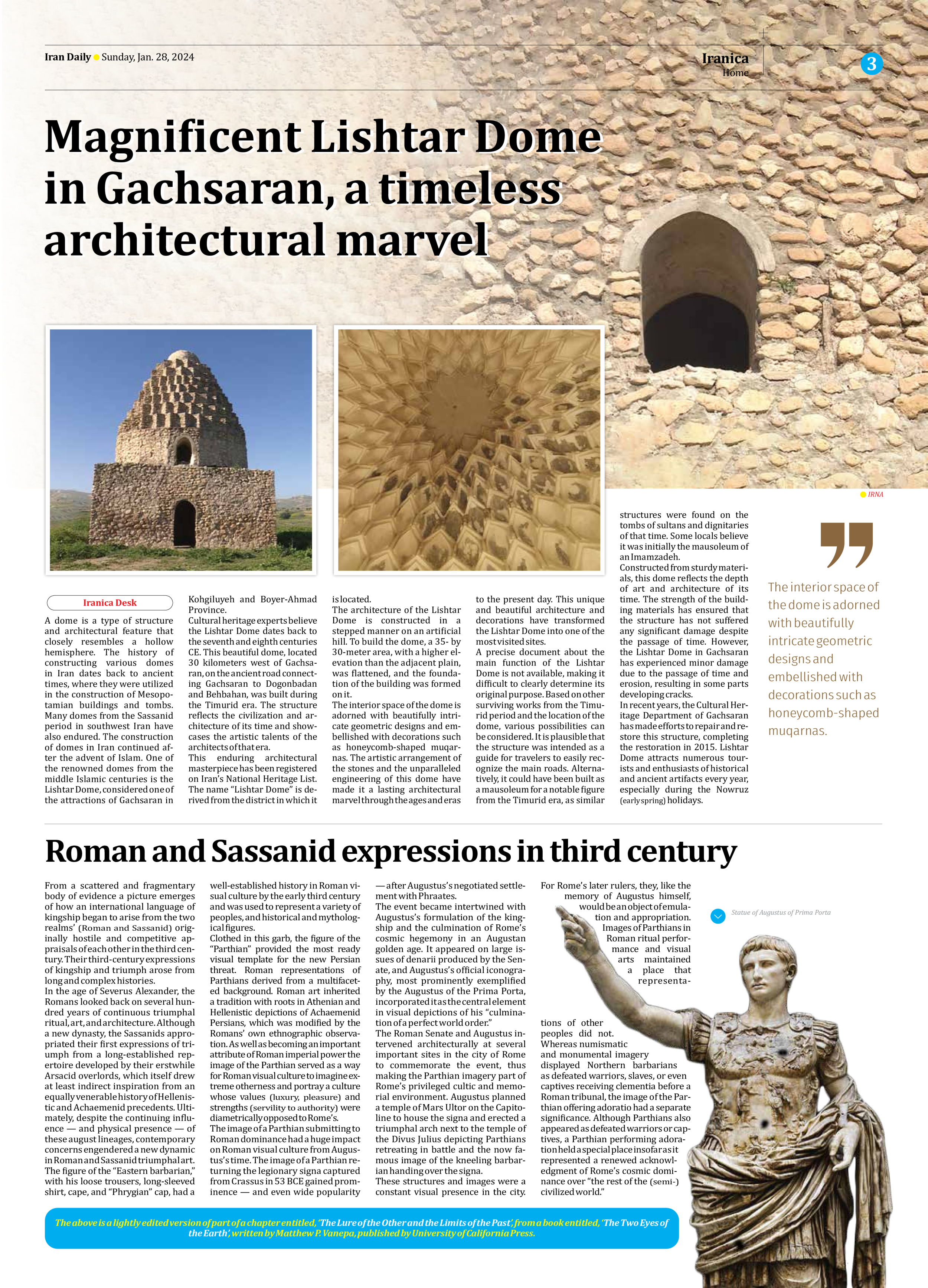
Roman and Sassanid expressions in third century
From a scattered and fragmentary body of evidence a picture emerges of how an international language of kingship began to arise from the two realms’ (Roman and Sassanid) originally hostile and competitive appraisals of each other in the third century. Their third-century expressions of kingship and triumph arose from long and complex histories.
In the age of Severus Alexander, the Romans looked back on several hundred years of continuous triumphal ritual, art, and architecture. Although a new dynasty, the Sassanids appropriated their first expressions of triumph from a long-established repertoire developed by their erstwhile Arsacid overlords, which itself drew at least indirect inspiration from an equally venerable history of Hellenistic and Achaemenid precedents. Ultimately, despite the continuing influence — and physical presence — of these august lineages, contemporary concerns engendered a new dynamic in Roman and Sassanid triumphal art.
The figure of the “Eastern barbarian,” with his loose trousers, long-sleeved shirt, cape, and “Phrygian” cap, had a well-established history in Roman visual culture by the early third century and was used to represent a variety of peoples, and historical and mythological figures.
Clothed in this garb, the figure of the “Parthian” provided the most ready visual template for the new Persian threat. Roman representations of Parthians derived from a multifaceted background. Roman art inherited a tradition with roots in Athenian and Hellenistic depictions of Achaemenid Persians, which was modified by the Romans’ own ethnographic observation. As well as becoming an important attribute of Roman imperial power the image of the Parthian served as a way for Roman visual culture to imagine extreme otherness and portray a culture whose values (luxury, pleasure) and strengths (servility to authority) were diametrically opposed to Rome’s.
The image of a Parthian submitting to Roman dominance had a huge impact on Roman visual culture from Augustus’s time. The image of a Parthian returning the legionary signa captured from Crassus in 53 BCE gained prominence — and even wide popularity — after Augustus’s negotiated settlement with Phraates.
The event became intertwined with Augustus’s formulation of the kingship and the culmination of Rome’s cosmic hegemony in an Augustan golden age. It appeared on large issues of denarii produced by the Senate, and Augustus’s official iconography, most prominently exemplified by the Augustus of the Prima Porta, incorporated it as the central element in visual depictions of his “culmination of a perfect world order.”
The Roman Senate and Augustus intervened architecturally at several important sites in the city of Rome to commemorate the event, thus making the Parthian imagery part of Rome’s privileged cultic and memorial environment. Augustus planned a temple of Mars Ultor on the Capitoline to house the signa and erected a triumphal arch next to the temple of the Divus Julius depicting Parthians retreating in battle and the now famous image of the kneeling barbarian handing over the signa.
These structures and images were a constant visual presence in the city. For Rome’s later rulers, they, like the memory of Augustus himself, would be an object of emulation and appropriation. Images of Parthians in Roman ritual performance and visual arts maintained a place that representations of other peoples did not. Whereas numismatic and monumental imagery displayed Northern barbarians as defeated warriors, slaves, or even captives receiving clementia before a Roman tribunal, the image of the Parthian offering adoratio had a separate significance. Although Parthians also appeared as defeated warriors or captives, a Parthian performing adoration held a special place insofar as it represented a renewed acknowledgment of Rome’s cosmic dominance over “the rest of the (semi-)civilized world.”
The above is a lightly edited version of part of a chapter entitled, ‘The Lure of the Other and the Limits of the Past’, from a book entitled, ‘The Two Eyes of the Earth’, written by Matthew P. Vanepa, published by University of California Press.







